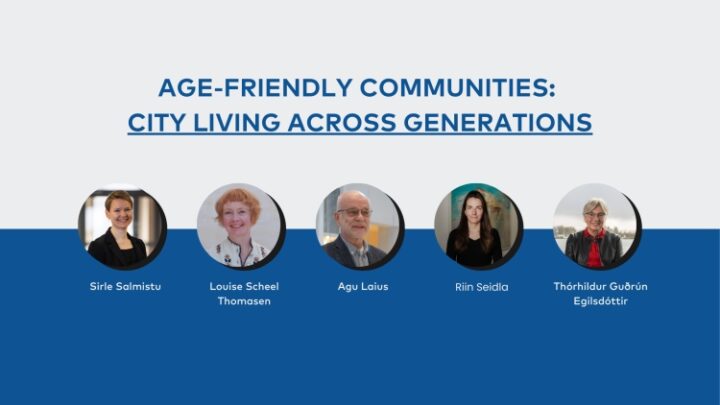Raul Eamets: the refugee crisis – surprise, confusion, despair, anger. What next?

This year’s conference was not dedicated to the refugee crisis. We did not analyse the political and economic reasons behind this crisis. Our aim was to talk about our experiences with integrating new arrivals up until now and how new arrivals are currently coping in the labour market and how social integration has taken place.
Providing the summary for the first day (31 March 2016) of fourth Nordic and Baltic Migration Conference “Immigration to the Nordic-Baltic Region: New Trends and Integration Challenges” is Raul Eamets, dean of the Faculty of Social Sciences of the University of Tartu. This summary reflects the personal opinions of Raul Eamets.
Estonian Foreign Minister Marina Kaljurand described the current refugee crisis in numbers: over one million refugees last year, 180,000 refugees in the first three months of this year and more than 4000 dead in the Mediterranean. At the same time, we have to keep in mind than one million refugees accounts for 0.2% of the population of the European Union (EU). The EU can cope with that figure. Last year’s Valletta summit where EU leaders agreed to give 1.2 billion euros in aid to African countries was a positive experience.
Tuomas Martikainen, director of the Finnish Institute of Migration, said that eastern Europe, the Baltic countries and other EU countries are the main source of new immigrants coming to the Nordic countries. Migrants from third countries do not form the majority of new immigrants at the moment.
What was interesting was the division of the refugee crisis into chronological stages, which I have complemented with an emotional background.
- A humanitarian crisis. The war refugees needed help; they no longer had a homeland and just had to run. The associative emotion here was SURPRISE. No one foresaw that there would be so many refugees and the initial mentality towards this development was more compassionate and supportive.
- CONFUSION. Refugee admission systems were not ready for an influx of this scale – there was a shortage of basic things such as accommodation, food, logistics, necessities, etc. Reception centres clogged up, etc.
- DESPAIR. When will it all end? Why are the central systems of the EU not working? Why are other countries not helping? What do we do now?
- ANGER. We have passed a certain critical limit. What next? We have reached our limit and cannot accommodate any new people.
What happens next and what will the new year bring? There are two strategies for receiving refugees:
- The EU strategy: solidarity with respect to relocating the refugees, reducing the number of political refugees, supporting source countries, a long-term strategy;
- NIMBY (Not In My Back Yard): block migration, the idea of nation states, every country for themselves, short-term vision.
Liana Roosmaa, adviser to the Estonian Ministry of the Interior, gave a thorough overview of the adaption programme for people who have resided in Estonia under a residence permit for less than five years.
The programme started last August and it is compulsory for refugees and voluntary for others. Today, more than 4000 people have participated in the programme. The main countries people leave to come to Estonia at the moment are Ukraine, Russia and Finland. What interests me is whether Estonia has a risk strategy for when we have 5000 people waiting at the border at once.
Tiit Tammaru, professor of urban and population geography at the University of Tartu, gave an excellent systematic overview of the refugee situation in Sweden. Some more important ideas: if a person has already come to a country they have a choice to integrate or go back. The more complicated it is for the person to return to their homeland, the greater the likelihood that integration will be their only option. In consideration of the future, it is very likely that the people who will dominate in Estonia will originate from countries where it is very difficult to go back. This reminds me of examples from previous conferences about the migration between Estonia and Finland, where travelling between the two countries is easy and many Estonians have returned home.
As for the academic conclusions from Tammaru’s presentation, I would like to bring out that the segregation by place of residence increases over time because new immigrants go where their fellow countrymen already reside. The segregation in the labour market decreases over time. It simply takes some time before migrants find work. Younger people integrate faster in the labour market. Another interesting fact was that women who had previously not worked in their country of origin entered the labour market in Sweden.
Mari Vaattovaara, a professor of rural geography and vice dean of the faculty at the University of Helsinki studied the refugee situation in Finland’s labour market and admitted that migrants from different places from Africa face the biggest problems in that field. Migrants from Africa live more closely together, or in other words, their segregation by place of residence is greater than that of other groups of new immigrants. It is also characteristic of new immigrants to live in state-built residence spaces.
We can draw an important political conclusion from the research results: if the state builds social housing for migrants and encourages their concentration in those kinds of rural areas then that, in turn, reduces their integration in the labour market.
From the presentation of Leen Rahnu, who works as a researcher in the Estonian Institute for Population Studies, we learned that the percentage of mixed marriages in Estonia (domestic partnerships) is 6–12% while there are fewer mixed marriages among second generation migrants – much less than in western Europe.
During the discussion round it was discussed if and how it would be possible for the state to improve the situation. The solution that was put forward was that integration should already start in school or basically that monolingual schools would help solve the problem in Estonia.
During the discussion panel about economic integration, the main question concerned the length of the so-called adjustment period – how long does it take for them to enter the labour market after arriving in the country? This period of time was thought to be around 2–5 years. In other words, we have established a fairly complex system of regulations where people initially have to wait for quite a long time to be recognized as refugees. After that it is time for appropriate adaption programmes, language and labour market courses, etc. while receiving benefits from the state. This removes elementary economic inducements for refugees to enter the labour market immediately.
Watch video recording from the first day of the concerence. Presentations from the conference are available here and photos here.


